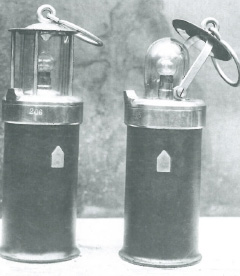Why Batteries are the Pillars of the Digital World
Application
August 2. 2024
2 min.
Our civilization increasingly relies on storing and processing data in facilities packed with sensitive equipment. Their operation is ensured by sophisticated systems based on batteries. Or flywheels, for the sake of completeness.

Not only is this article stored on a server somewhere, but you are reading it on a device that uses cloud-based apps and services. In order for you to enjoy the paragraphs ahead, all of this is secured by uninterruptible power supply (UPS) systems. These not only back up servers and storage devices in case of power interruptions, but also protect the equipment against power surges and other disturbances.
Typically, an UPS can supply the data center with electricity for several minutes to a few hours until either mains power is restored, or backup generators are activated. The different types of UPSs used for this purpose include offline or standby UPS, line-interactive UPS, and online or double-conversion UPS. Each setting offers different levels of protection and efficiency, with the simplest system being the former one. Modern offline/standby UPSs are usually equipped with EMI/RFI filters offering only basic protection from power surges, but essentially, they are intended to just switch to battery backup when needed.
Inline for smaller scale
Maybe even more importantly, if you wanted to back up several servers with an offline/standby UPS, it would have to be impractically large. That's why even the smallest data centers deploy at least a line-interactive UPSs. This setting is fairly similar in operation to an offline/standby UPS, but with the addition of an automatic voltage stabilizer, usually a transformer with an adjustable number of powered coils. This allows for decreasing or increasing the output voltage by up to ±15 percent of the nominal value, enough to provide a decent voltage conditioning capability.
A line-interactive UPS also reacts faster to an outage, transferring to battery-derived power within 2 to 4 milliseconds, while in offline/standby UPSs, a break in power of up to 8 milliseconds is inevitable. But for loads exceeding 5 kVA of apparent power, the line-interactive design would become impractical large. Also, what if you operate equipment for which even 4 thousandths of a second are too long? It such case, a double-conversion online UPS system has you covered as it does not have any transfer time. Obviously, because the power flows through the UPS at any given moment, outage or not.
Online for maximum protection
In this case, the electricity first passes through an AC-to-DC rectifier, and then through an inverter to convert power back before it is fed to the connected equipment. This means that a double-conversion online UPS completely isolates the equipment from raw utility power, serving as a buffer that filters out all types of power disturbances. This setting thus not only protects against power and voltage inconsistencies, but also cleans the power signal from frequency variation or harmonic distortion.
On the other hand, a double-conversion online UPS has a more complex design than the other types. For instance, it needs a more efficient cooling system designed to run continuously, making it costlier than other UPS systems. Which applies to its operation as well, since it has a higher electricity consumption due to more significant power dissipation. And last but not least, the constant wear on the power components reduces longevity and reliability compared to other UPS designs.
Storing the energy
Some UPSs use flywheels to store energy mechanically by spinning the rotor's mass around its axis. Sometimes enclosed in vacuum to reduce friction and energy loss, the wheel is connected to a motor or generator which keeps the unit spinning until it's called upon to release its energy. Sometimes called rotary UPSs, the advantages of these systems include a fast discharge rate, compactness, and minimal maintenance. However, for comparable installation costs, a flywheel will provide only seconds of reserve energy, when a battery storage would supply electricity for many minutes.
That's why most data centers are backed up by either hybrid systems, or in most cases by batteries. For years, UPSs relied either on valve-regulated lead-acid (VRLA) or nickel-cadmium batteries. However, modern lithium-ion cells offer a much longer life span than VRLAs, almost comparable to the exceptional longevity of Ni-Cd. Li-ion storages can be quite low-maintenance too, and particularly lithium-iron-phosphate (LFP) and lithium-manganese oxide (LMO) cells are pretty safe as well, i.e. resistant to thermal runaway. And most importantly, li-ion has a high self-discharge rate, which is obviously very useful in an UPS system.
Currently, UPS systems begin using AI-based tools for predictive analytics. Being able to proactively highlight maintenance needs and warn of looming issues will make UPSs even more reliable, improving the resiliency of our increasingly digital civilization.
Related articles
Securing the Flow: In Substations, Batteries Are Everywhere
March 6. 2024
2 min.
View moreTunnels Are Marvels of Engineering. And Not Just Because They Were Drilled Into Rock
November 29. 2023
2 min.
View moreRising to the Clouds, Electricity Must Never Run Out
October 2. 2023
2 min.
View more



